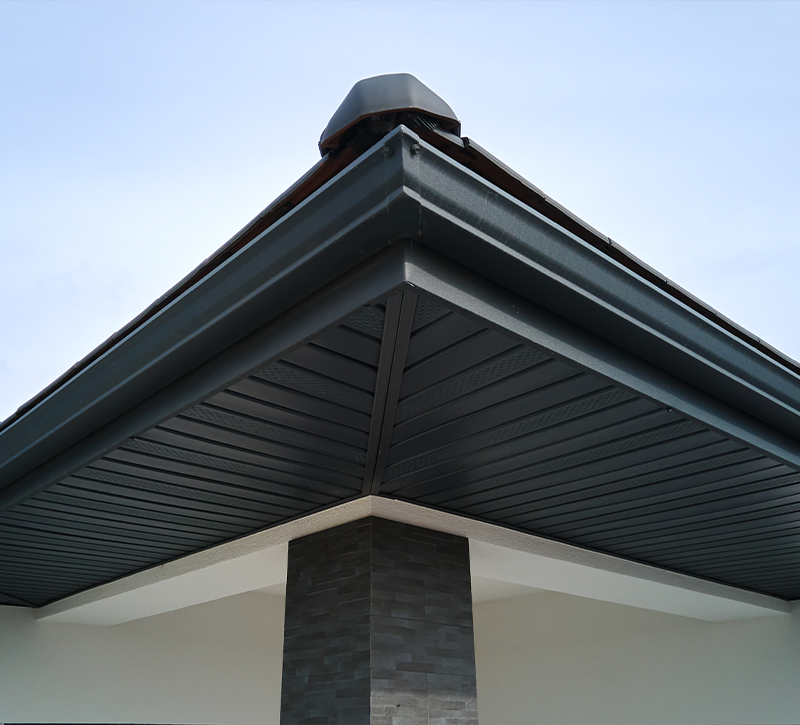
Edge of a Roof That Sticks Out: What Is It Called and How Does It Work?

The overhang or projection at the edge of a roof is known by several names, including eave, rake, and fascia. These elements not only add visual interest to a home's exterior but also serve important functional purposes. Let's take a closer look at what these roof components are, what they do, and how they're constructed.
What is the eave of a roof?
The eave is the part of the roof that overhangs the walls of the house. It's typically the lowest part of the roof and extends horizontally beyond the house's exterior walls. Eaves protect the exterior walls from rainwater, which can cause damage and deterioration over time. Additionally, they provide shade for the walls, which can help to reduce cooling costs in warmer months.
The eave is made up of several components, including the soffit, the fascia and the drip edge. The soffit is the underside of the overhang and it's usually made of wood, vinyl or aluminum. The fascia is the vertical finishing board that covers the ends of the roof rafters and provides a surface for attaching the gutters. The drip edge is a metal flashing that prevents water from seeping between the fascia and the roof deck.
What is the rake of a roof?
The rake is the sloping edge of a gable roof, which is the triangular portion of the roof that sits between two sloping roof sections. The rake overhangs the exterior wall of the house, similar to the eave, but it's located at the gable end of the roof. Like the eave, the rake is made up of several components, including the soffit, the fascia and the drip edge.
How is the eave and rake constructed?
The construction of the eave and rake is similar. The roof rafters extend beyond the exterior walls of the house and the soffit is attached to the underside of the overhang. The fascia is then attached to the ends of the rafters, covering the soffit and creating a finished appearance. The drip edge is installed along the roof's edge to prevent water from seeping behind the fascia and into the roof decking.
Why are eaves and rakes important?
Eaves and rakes serve important functions for a home's exterior. They protect the walls from water damage by directing rainwater away from the house. This helps to prevent moisture from penetrating the exterior walls, which can cause rot, decay and mold growth. Additionally, eaves and rakes provide shade to the walls, which can help to reduce cooling costs in warmer months.
In summary, the eave and rake are important components of a home's roof system. They provide protection for the exterior walls from rainwater and add visual interest to a home's exterior. If you're building a new home or replacing an existing roof, be sure to work with a reputable roofing contractor to ensure that your eaves and rakes are properly constructed to provide the necessary protection for your home.

 Rated Excellent
Rated Excellent